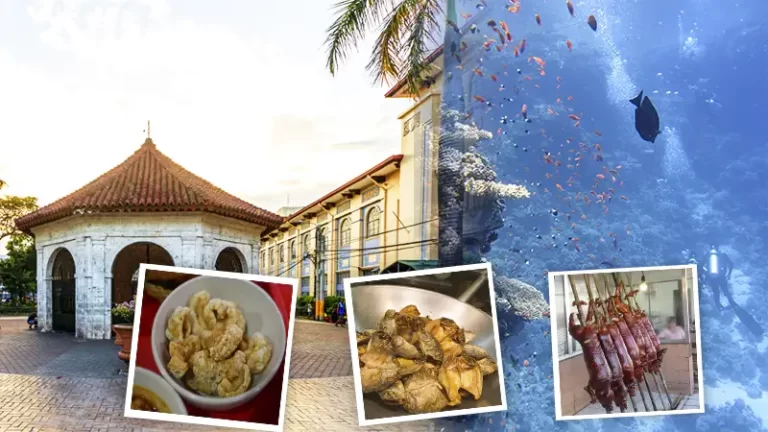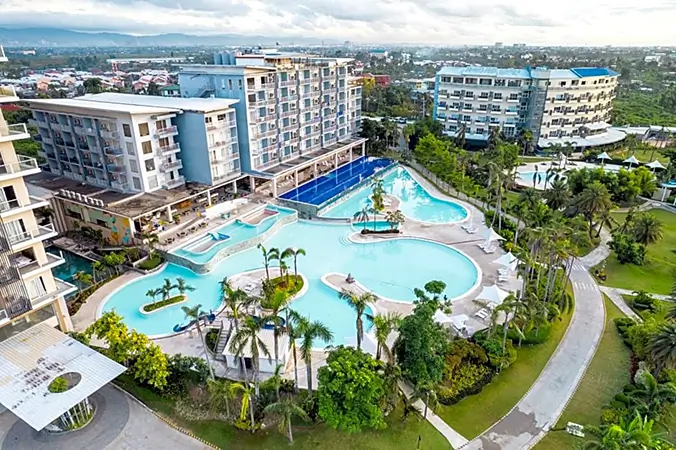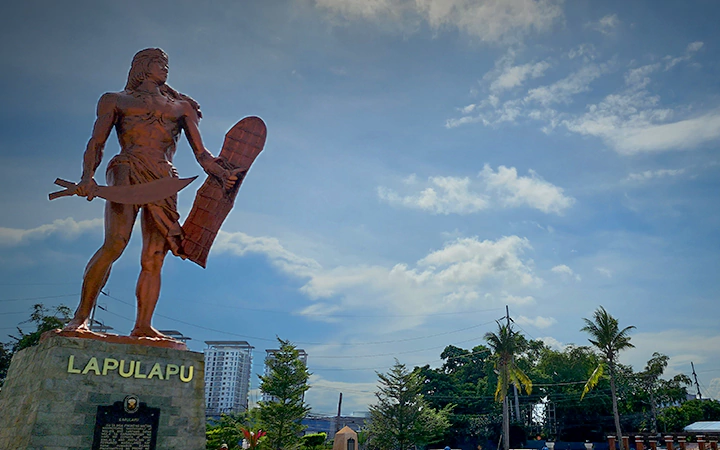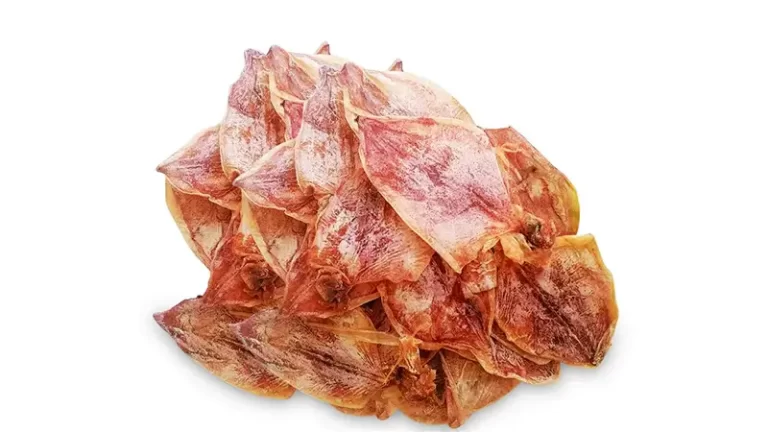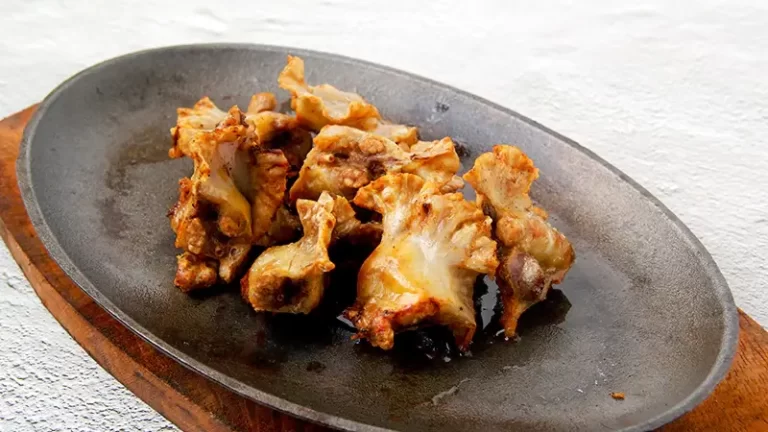Dried mangos are made by lightly sweetening cut strips of mango and then drying them through a dehydration process.
This dehydration process intensifies the mango flavor and sweetness and creates an easy-to-store, long-lasting snack with all the delicious mango flavor and nutrition without any of the sticky gooey mess of fresh mangos.
Dried mangos are chewy and soft. When it comes to dried mangoes, Philippines dried mango is especially popular, not just locally but internationally as well.
But, what makes dried mango so popular? What does drying do to mangoes? What are the benefits of eating dried mango with no sugar added?
Are dried mangoes a healthy snack? Discover the answers to these questions and more!
What is Dried Mango?
Mango is one of the most popular tropical fruits, along with pineapples, coconuts, bananas, and plantains, thanks to its sweet taste and health benefits. However, it’s seasonal and highly perishable.
So, dehydrating it is a great way to prolong the fruit’s shelf life and add mango to other food products
Essentially, dried mango is a dehydrated and dried version of its fresh counterpart.
The dehydration and drying process also concentrates the nutrients within the mango into a smaller food item that has different chemical and nutritional properties than the original mango and can extend its shelf life.
What does drying do to mangoes? There are many different ways to commercially dry mangoes, but all processes are designed to completely dehydrate the fresh fruit.
Dehydration is the process of removing water which creates a tougher, more leathery texture.
Additionally, since water makes up a large portion of fresh fruit, dried fruit always weighs less.
The dehydration and drying process also concentrates the nutrients within the mango into a smaller food item that has different chemical and nutritional properties than the original mango.
What nutrients are in dried mango vs. fresh mango? When comparing dried mango in the Philippines to its fresh counterpart, equivalent amounts will have very different nutritional contents.
This is because the dried form is, ounce for ounce, a more concentrated version of the original fruit.
That being said, some nutrients are better preserved by the dehydration process than others.
For an exact nutrient comparison, here are the nutrients in 100 grams of raw, fresh mango (F) compared to 100 grams of dried mango (D):
- Water — 83.5 grams in F — 16.6 grams in D
- Protein — 0.82 grams in F — 2.45 grams in D
- Total fat — 0.38 grams in F — 1.18 grams in D
- Carbohydrates — 15 grams in F — 78.6 grams in D
- Fiber — 1.6 grams in F — 2.4 grams in D
- Sugar —13.7 grams in F — 66.3 grams in D
- Calcium — 11 milligrams in F — 0 milligrams in D
- Iron — 0.16 milligrams in F — 0.23 milligrams in D
- Magnesium — 10 milligrams in F — 20 milligrams in D
- Phosphorus — 14 milligrams in F — 50 milligrams in D
- Potassium — 168 milligrams in F — 279 milligrams in D
- Sodium — 1 milligram in F — 162 milligrams in D
- Zinc — 0.09 milligrams in F — 0.3 milligrams in D
- Copper — 0.111 milligrams in F — 0.3 milligrams in D
- Selenium — 0.6 micrograms in F — 2.1 micrograms in D
- Vitamin C — 36.4 milligrams in F — 42.3 milligrams in D
- Thiamin — 0.028 milligrams in F — 0.062 milligrams in D
- Riboflavin — 0.038 milligrams in F — 0.085 milligrams in D
- Niacin — 0.669 milligrams in F — 2 milligrams in D
- Vitamin B-6 — 0.119 milligrams in F — 0.334 milligrams in D
- Folate — 43 micrograms in F — 68 micrograms in D
- Choline — 7.6 milligrams in F — 23.7 micrograms in D
- Vitamin A — 54 micrograms in F — 67 micrograms in D
- Beta carotene — 640 micrograms in F — 786 micrograms in D
- Vitamin E — 0.9 milligrams in F — 4.02 milligrams in D
- Vitamin K — 4.2 micrograms in F — 13.2 micrograms in D
Also, please remember that the exact nutrients in your dried product will depend on the variety of mango used.
Some varieties may contain more or less of a particular nutrient than others. For instance, dried mango Cebu may use a different variety of mango compared to other dried mangoes made in other areas. Learn more about dried mango Cebu here.
Dried Mango in the Philippines
Compared to its competitors, the Philippine dried mango is known for its premium cuts of carabao mango, a variety that is more abundant in the Philippines and is more efficient to use because of its thick flesh.
Due to the high quality of this raw material, Philippines dried mango is also distinguished from its competitors for its naturally juicy, sweet, and fresh taste.
Dried Mango: Potential Health Benefits
Research shows that mangoes are packed full of beneficial nutrients, including but not limited to vitamin C, folate, potassium, and fiber.
All of these nutrients play important roles in your body, so getting enough of them in your diet can greatly lower your risk for a number of chronic diseases.
Mangos are a rich source of Vitamin C. However, the nutritional value of dried mango slices differs slightly from that of fresh mango as a result of the drying process.
The Vitamin C content is reduced, but the dried fruit still contains a significant amount of fiber and antioxidants.
With an additional process of blanching, dried mango can retain the content of its carotenoids and vitamin C.
100 grams of dried mango contains about 314 calories, in which carbohydrates are the main source of calories, followed by protein and fat.
Dried mango also has 20% of the daily value for Vitamin A and notable content of Vitamin B, D, and E. However, most of the Vitamin C in the mango is lost during the process of dehydration; it carries only 2% of the daily value.
Minerals such as calcium, iron, and phosphorus can be found in dried mangoes
Often, people have an easier time getting a diversity of essential nutrients on days when they eat dried fruit (such as dried mango), and they’re usually a more convenient on-the-go option than fresh fruit.
They also have a longer shelf life, so you don’t have to worry about your fruit supply spoiling.
Just remember: Dried mango is a great source of nutrients, including vitamin A, vitamin C, and folate.
It does deliver a fair number of calories and carbs in the form of naturally occurring sugars and, if sweetened, added sugars. So, moderation is key.
Dried Mango: Potential Risks
While mango allergy is very rare, some people may be allergic to a compound known as profilin, which may lead to allergic reactions ranging from mild to severe.
Also, people who have had previous contact with poison oak or poison ivy may experience a delayed reaction to mangoes due to the high concentration of urushiol in both plants.
However, this is most likely to happen when dried mango still contains the skin, as the compound is predominantly found in mango peel.
Fortunately, dried mango in the Philippines no longer have their skin so this risk can be reduced.
In addition, some individuals, especially people with asthma, may react to dried mangoes if sulfites are added as a preservative to maintain their color and prevent spoilage.
Some commonly used sulfites include sulfur dioxide or potassium metabisulphite. Also, eating dried mango can cause side effects like red eyes and runny nose if you’re allergic to sulfites.
You can avoid this by choosing unsulfured (or sulfite-free) dried fruit.
Aside from providing high amounts of vitamins, dried mango is also high in calories and naturally occurring sugars, which may lead to high blood sugar levels and unwanted weight gain if consumed in large amounts. So, moderation is key.
Trying to lose weight? Be careful around dried mango, too! Just four pieces of unsweetened dried mango contain 120 calories.
Even with its high levels of vitamins and minerals, it may not be worth the extra calories if you’re trying to lose weight.
Other low-calorie fruits, like fresh apples and berries, maybe a better option for satisfying your sweet tooth.
Lastly, remember to be careful of portion sizes, as dried mangoes are a concentrated source of natural sugars.
To reduce added sugar intake, choose unsweetened dried mango or dried mango with no sugar added. Dried mango can be purchased sweetened or unsweetened
Note that the sweetened version will have more sugar. Check labels to compare nutrition information across brands and varieties.
How Much Dried Mango Should You Eat?
According to the USDA, one-half cup serving of most dried fruits is equal to a one-cup serving of fresh fruit.
However, mangoes are an exception: One-third of a cup of dried fruit is equal to one cup of fresh fruit.
Meanwhile, the amount of dried mango that you should eat every day, depends on a number of factors such as your:
- Age
- Gender
- Weight
- Height
- Amount of daily physical activity
Loose recommendations for daily fruit intake based on age are as follows:
- 12-to-23-month-olds need one-half to one cup
- Two-to-four-year-olds need one to one-and-a-half cups
- Five-to-eight-year-olds need one to two cups
- Females nine and older need one-and-a-half to two cups
- Males nine to 60 need two to two-and-a-half cups
Dried Mango FAQs
Below are some answers to frequently asked questions (FAQs) about dried mangoes.
- Where are dried mangoes from in the Philippines?
There are many manufacturers of dried mango in the Philippines, but the majority of them are in Cebu. The Philippines is home to 7 million mango trees and a large share is processed by drying.
Dried mango processors are mostly based in Cebu. Around 85% of the local total dried mango production is exported to key markets, like the United States, Japan, South Korea, China, and other Asia Pacific countries.
- What is the best-dried mango brand in the Philippines?
Among the many dried mango brands in the Philippines, 7D Dried Mangoes is considered one of the best.
FPD Food International Inc produces super quality and world-class mango products including dried mangoes, dried pineapple, dried mango rind candy, mango nectar, mango puree, and other assortments.
FPD envisions itself as one of the leading food manufacturing companies focusing on superior quality and world-class fruit products and services that satisfy long-term partnerships for global trading and food and service innovation.
FPD carries the world-renowned 7D brand, which has been in the local and international market for over 40 years! Learn more about 7D Dried Mangoes here.
- Are Philippine Brand dried mangoes healthy?
Delicious and high in Vitamin C, Philippine Brand Dried Mangoes are a healthy alternative for people who are looking for healthier snacks. Made in the Philippines by a leading producer of various dried fruits.
- Are dried mangoes a healthy snack?
Dried mango is a healthy and convenient snack as long as you’re careful of the serving size or consume it in moderation.
It is a good source of vitamins and plant bioactive compounds such as antioxidants, which may protect against anti-inflammatory diseases and even cancer.
Snacking on Philippine dried mango may be a more nutritious alternative to conventional salty or sugary snacks while helping satisfy cravings for sweets.
Follow these buying tips to find the most nutritious choice:
- Read the ingredients list, and avoid those with added sugars or concentrated juices. If you want to avoid sugar, you can buy dried mango with no sugar added.
- Avoid candied dry mango or those with a sugary coating.
- Choose packages where mango is the only ingredient, or try to stick to those with all-natural ingredients.
- Do dried mangoes have too much sugar?
When you compare the nutrients in dried vs fresh mangoes (as seen above), you can clearly see that dried mangoes have a lot more sugar.
The 100-gram samples had 66.3 grams of sugar compared to the 13.7 grams found in 100 grams of fresh mango.
Still, while too much sugar isn’t good for you, some sugars are healthier than others. Fructose (the main sugar that is naturally contained within fruits like mangoes) is generally much better for you than the highly processed sugar additives found in junk food.
Approximately 80% of Americans don’t eat enough fruit. Also, if you want to avoid sugar, there are dried mango no sugar added options that you can buy in the market.
- How long can dried mangoes last when stored?
While fresh mangoes can be stored for about 5 days, dried mangoes can be stored for a lot longer depending on a variety of factors, such as the best-by date, the drying method, and how the dried mango is stored.
Dried mangos stay fresh longer when stored in a refrigerator or in a pantry in tightly closed containers to keep out moisture and other contaminants. Unopened dried mango stored in the pantry can be stored between 6 – 12 months! If stored in the refrigerator, it can be stored for 1–2 years.
When frozen, it can be stored for longer. However, while frozen dried mango is supposedly able to extend its shelf life indefinitely, like most foods, it can break down and develop freezer burn after a long period of time.
The freezer time shown is only for the best quality where the dried mango is kept frozen at 0 °F continuously.
Any spoiled dried mangoes should be removed from the freezer to avoid affecting the others. The best way to detect spoilage is to look at and smell the dried mangoes:
anything that has an odor or visible mold should be discarded. Common traits of dried mango going bad are hardness, discoloration, and loss of flavor.
Also, it is always best to check for signs to see whether the fruit has gone bad.
Dried Mango in The Philippines Price
Dried mango prices can vary depending on the brand, quantity, pack size, and where you buy it. For instance, one brand maybe is more expensive, and purchasing online may be cheaper compared to mall prices.
Prices can range from Php 68 (Philippine Dried Mango 100g), Php 285 (7D Dried Mangoes 200g), or more.
Where to Buy Dried Mango in the Philippines
Dried mango is often available in the supermarket’s produce, dried fruit, snack, or baking aisles.
Alternatively, you can purchase it online on platforms like Shopee, Lazada, BigBuyMall.ph, and other online resellers.
The Bottom Line
Dried mango is a nutritious and convenient snack that you can enjoy on the go. Dried mango is jampacked with vitamins and antioxidants.
However, like most dried fruits, they can be high in calories and naturally occurring sugars, so moderation is key.
When buying dried mango, stick to brands without added sugar and a short ingredients list.



